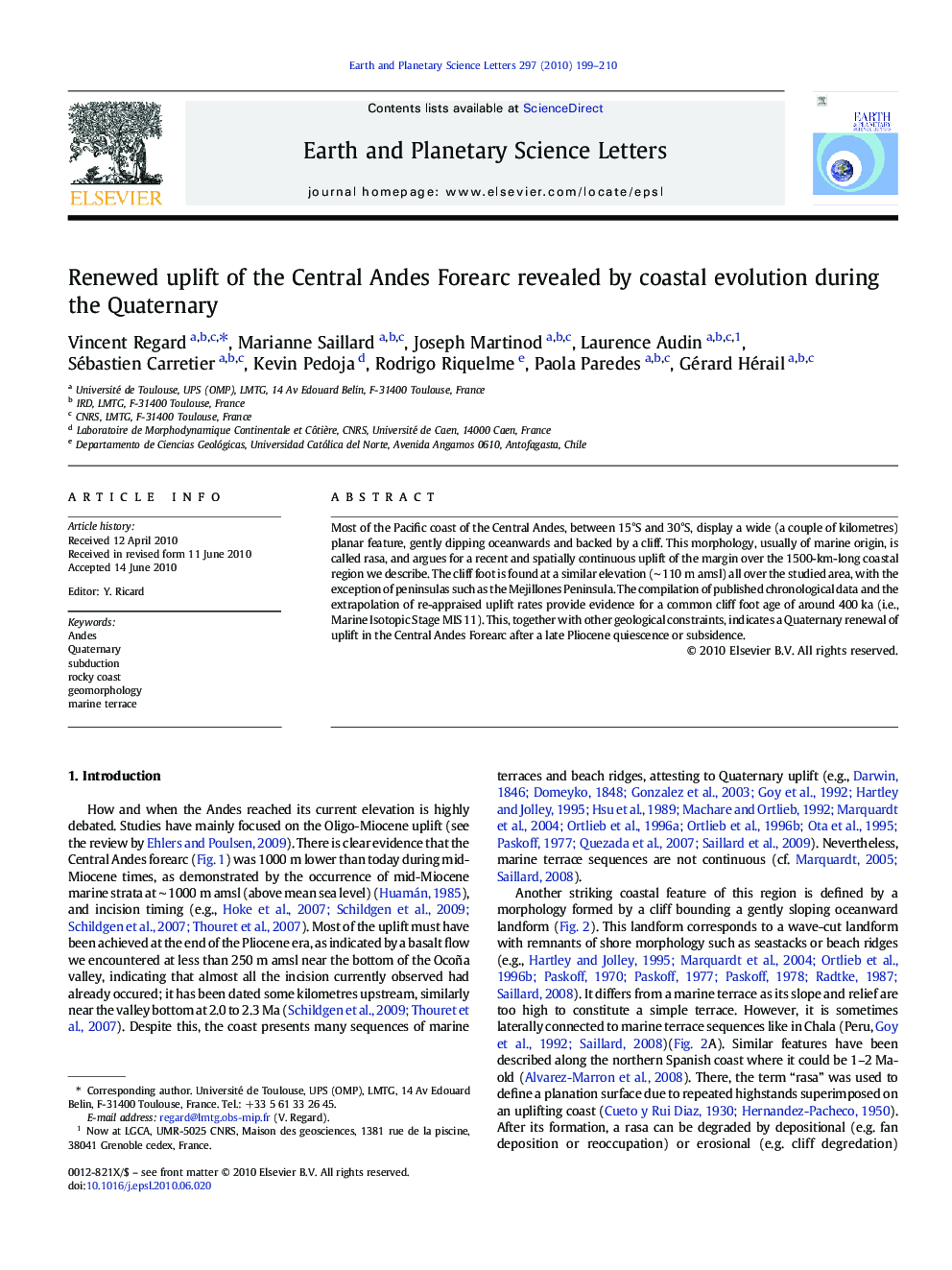| Article ID | Journal | Published Year | Pages | File Type |
|---|---|---|---|---|
| 4678346 | Earth and Planetary Science Letters | 2010 | 12 Pages |
Most of the Pacific coast of the Central Andes, between 15°S and 30°S, display a wide (a couple of kilometres) planar feature, gently dipping oceanwards and backed by a cliff. This morphology, usually of marine origin, is called rasa, and argues for a recent and spatially continuous uplift of the margin over the 1500-km-long coastal region we describe. The cliff foot is found at a similar elevation (∼ 110 m amsl) all over the studied area, with the exception of peninsulas such as the Mejillones Peninsula. The compilation of published chronological data and the extrapolation of re-appraised uplift rates provide evidence for a common cliff foot age of around 400 ka (i.e., Marine Isotopic Stage MIS 11). This, together with other geological constraints, indicates a Quaternary renewal of uplift in the Central Andes Forearc after a late Pliocene quiescence or subsidence.
